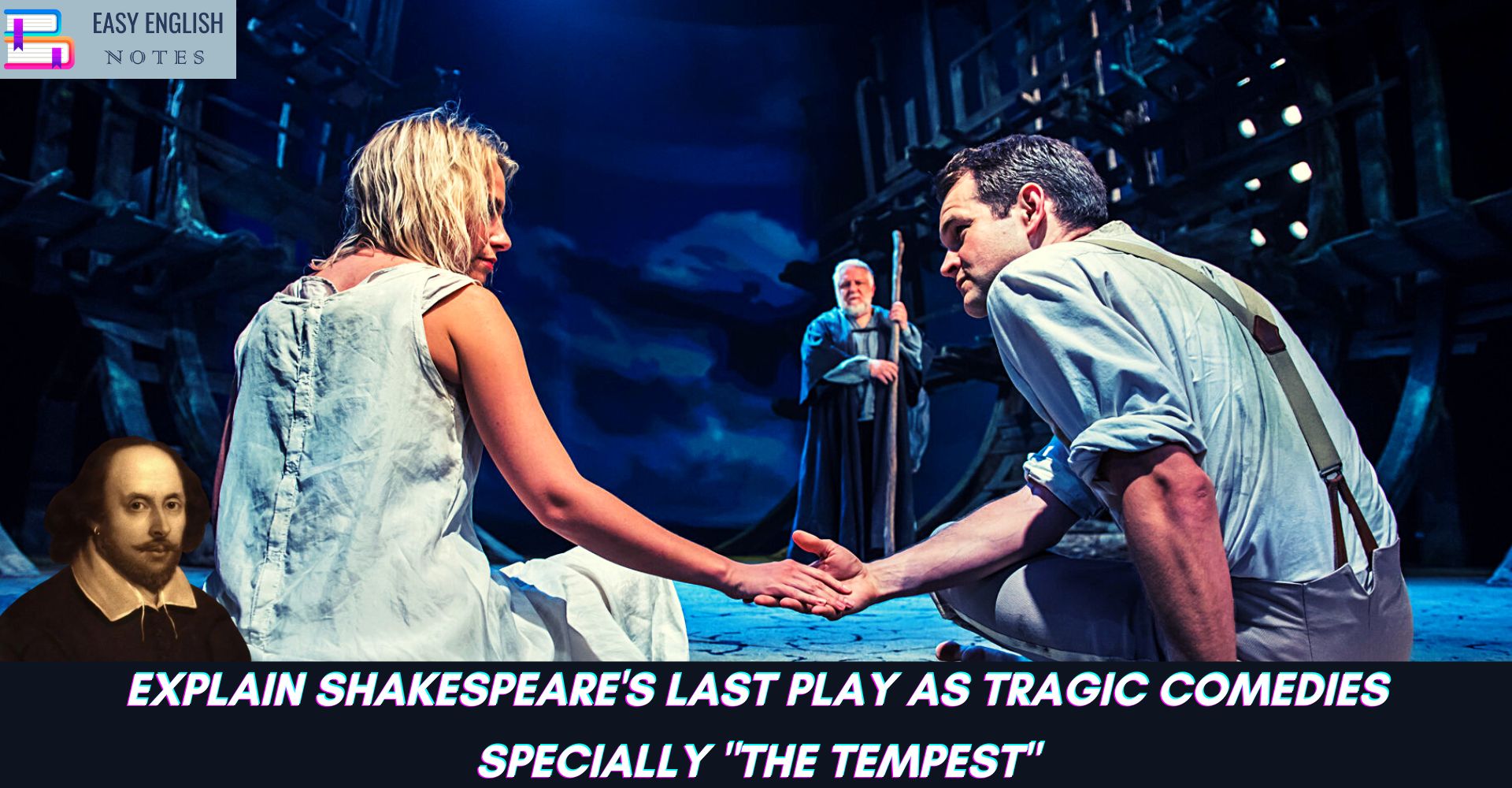Shakespeare’s last play were reconciling. using and co-operative. “The Tempest” shows that the last act is meeting point between the two opposites. Similarly in almost all last dramas Shakespeare was seen reconciling.
Thus, what was originally narrative, historical, lyrical, or expository became not only dialogue but dialogue involving passion, suspense, climax and other elements presented not in cold type but in the vivid mimicry of life. It cannot be said that Shakespeare’s respect for his sources very often checked his expression of his sense for the dramatic. He did not hesitate, therefore, to combine details from plots originally unrelated or to change episode by reemphasizing them or altering them completely. Furthermore he often changed the proportions of the original story, he expanded scenes from the barest of hints, he reversed a conclusion, he even added episodes from another story or from his own fertile brain. He sometimes introduced realism to contrast with romance or a bit of clowning to dull the bitter edge of grief. The mood of the material he often changed, sentimentality becoming sentiment, the cynical becoming wholesome, the immoral the moral. For the original geographical setting, moreover, he had no respect if it stood in the way of his higher purposes. With his characters he was just as free; he frequently retained both name and characteristics of figure in his original or on the contrary, he changed both. When his sense of dramatic economy dictated he dropped a character out entirely, he added one or more not in the original. These and a dozen more liberties with his sources will be found in any extended comparisons of the play and their originals. Such pleasant study reveals Shakespeare as a man of wide reading and keen powers of observation, who was bold enough to take what he wanted and to change the borrowed materials as he wished.
Since it is impossible to do more in this brief section that suggests how Shakespeare transmuted his originals into drama, a glimpse of his methods can be given in only three plays, a comedy, a history, and a tragedy, and only a paragraph may be devoted to each. In the chart of his sources which follows, however, there are enough suggestions to provide a much fuller study of the aspect of the dramatist’s art.
Also Read :
- Compare Hamlet with Macbeth, Othello and other Tragedies
- A Short Note On The Use Of Imagery In Shakespeare’s Sonnets
- Prologue to Canterbury Tales – (Short Ques & Ans)
Shakespeare dramatized As You Like It from Thomas Lodge’s Rosalynde, an English prose romance of the usual artificial type which was popular with the Elizabethans. This story is sentimental and extravagant, with language and lyrics that are totally lacking in reality. To the general plot Shakespeare adhered rather closely; two or three changes, however, he made in the interest of better drama. In the original the exiled ruler and the usurper are unrelated: Shakespeare made them brothers so that their story might parallel that of Orlando and Oliver. Shakespeare’s banished ladies are, therefore, cousins; in Lodge’s story they are merely friends. In the original the usurper is killed in a great battle with the rightful king; in Shakespeare’s play he is converted by “an old religious man” and retires to a monastery. This happier disposal of the tyrant leaves no sad daughter, and there is, therefore, no discord in the merry weddings, which conclude the play. Shakespeare changed the names of the characters but not of others; thus the Duke Senior, Frederick, Orlando, Silvius and Celia of the play are respectively Gerismond, Torismond, Saladin, Rosader, Montanus, and. Alinda in Lodge’s story, but Rosalind and Phebe are the same. Perhaps the most important change of all is Shakespeare’s introduction into the play of realistic characters who do not appear at all in the original, the melancholy Jaques, the witty Touchstone, the bucolic morons, William and Audrey, and the hedgepriest. This entertaining group provide for the courtiers and their ladies and for the Dresden-China shepherds and shepherdesses that realistic contrast with romance which is so characteristic an element in Shakespeare’s comedies. This realism and the luverly movement of the main plots does much to break down in the comedy the stifle artificiality of the prose romance. Shakespeare retained many of the lyrical elements of his original, but he rewrote the songs, and through the mouths of his two truth-tellers, Jaques and Touchstone he poked gentle fun at the artificialities and pretenses of the court characters and the pastoral lovers.
In his plot-construction Shakespeare tended to condense his original, as he did so frequently when he reworked history and biography into the more compressed from of drama. Thus he combined the two quarrels of Brutus and Cassius into one (IV. iii) and similarly telescoped the two battles of Philippi into a single days engagement whereas they really occurred twenty days apart.
PLEASE HELP ME TO REACH 1000 SUBSCRIBER ON MY COOKING YT CHANNEL (CLICK HERE)











